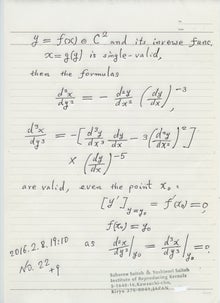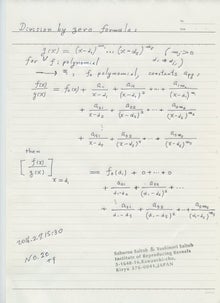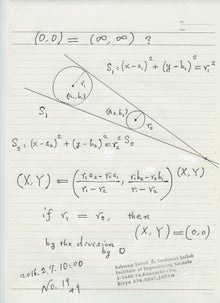古代
最古の国際都市ウル、50年ぶり発掘再開
古代メソポタミアの中核都市で、旧ソ連のような計画経済の痕跡が見つかる
2016.03.16
ウル遺跡での調査に参加しているコレージュ・ド・フランスのアッシリア学者、ドミニク・シャルパン氏が、アメリカ・イラク合同チームが発掘したくさび型文字が刻まれた板を調べている。(Photograph by Mahan Kalpa)
[画像のクリックで拡大表示]
イラク南部の荒涼とした砂漠。ここは世界最古の国際的な大都市があったとされる場所だ。一面が黄褐色のこの地で、発掘調査を進める考古学者らは黒檀の小片を発見した。長さが小指ほどもないこの小片は、はるかインドから、4000年も前に持ち込まれたものだ。ここからグローバル経済の始まりが垣間見える。
聖書にアブラハムの故郷と記されているウルの街は、紀元前2000年頃には富裕な帝国の中心都市だった。西へ約1200キロ離れた地中海や、東へ約2400キロ離れたインダス文明(古代メソポタミアではメルッハと呼ばれていた)から貿易商がここに集まってきた。(参考記事:「ラクダの家畜化は紀元前10世紀」)
階段式ピラミッド形寺院の「ジッグラト」。4000年前のウルにもジッグラトが建っていた。1920~30年代にかけて、レオナード・ウーリー卿がこの一帯で発掘調査を行った。昨秋、アメリカとイラクの考古学らは、ここで数十年ぶりに大規模な発掘を再開した。(Photograph by Georg Gerster, Panos)
[画像のクリックで拡大表示]
「『メルッハの黒い木』について記された文献はありますが、実物が見つかったのは初めてです」と、発掘の共同リーダーを務める米ニューヨーク州立大学ストーニーブルック校のエリザベス・ストーン氏は言う。
1920~30年代にかけて、英国人考古学者のレオナード・ウーリー氏は、ウルの遺跡から黄金の兜や王冠、宝飾品など、3万5000点あまりの人工遺物を発掘した。これは当時としては、エジプトのツタンカーメン王の墓にも匹敵する大発見であった。
過去50年間、ウルとイラク南部の大半は、戦争や内戦のために立ち入りがほぼ禁じられていたが、昨秋、米国とイラクの合同チームが発掘を再開し、現地で10週間にわたり作業を行った。昔とは違い、現代の考古学者たちは輝かしい黄金の遺物よりも、黒檀の小片のような、人類史において重要な時代の手がかりとなる品に注目している。(参考記事:「「イスラム国」が破壊した文化遺産」)
レオナード・ウーリー卿がウルの王族の墓から発掘した竪琴。紀元前2600年頃のもので、竪琴にあしらわれた雄牛はアフガニスタンから持ち込まれたラピスラズリのあごひげを蓄えている。雄牛は太陽神の象徴ではないかと考えられている。(Photograph by University of Pennsylvanie Museum of Archaeology and Anthropology)
[画像のクリックで拡大表示]
ウルは、今は乾燥した平地だが、かつてはユーフラテス川沿いのにぎやかな港町で、運河が縦横に走り、たくさんの商船が行き交っていた。倉庫や織物工場で溢れる街の中心には、ジッグラトと呼ばれる階段状のピラミッド型聖塔がそびえていた。その一部は今でも残っている。
ここに集落が生まれたのは6000年以上前で、約1000年後に始まった青銅器時代初期にはかなりの規模にまで発展していた。ウルでは、最古の文字のひとつであるくさび形文字も見つかっている。
しかし一帯が最も栄えたのは、アッカド帝国が衰退した後、ウルがメソポタミア南部を支配した紀元前2000年頃のことだった。広大な街には6万人を超える人々が暮らし、外国人居住区や、輸出用の毛織物や絨毯を生産する大規模な工場もあった。インドやペルシャ湾からやってきた貿易商が活気ある港に集まり、現在のイラク北部やトルコからは隊商が定期的にやってきた。
世界で最初の計画経済
現代の学者にとっては幸運なことに、ウルの支配者たちは、粘土板にごくささいなやりとりまで記録していた。主に使われたのは葦の尖筆だが、例の黒檀片は先端が尖っていることから、高位の筆記者が使う尖筆だったのではないかとストーン氏は考えている。
フランスの高等教育機関コレージュ・ド・フランスでくさび形文字を専門とするドミニク・シャルパン氏は言う。「この街は世界で最初の計画経済、いわばソビエト連邦のようなものでした」
考古学者のキャサリン・バージ氏が、ウルにあった古代の住居の上に作られた墓で発掘作業をしている。ウルの没落からはるか後に寺院が点在していたこの街は、死者を埋葬する場所としてメソポタミア人によって活用されていた。(Photograph by Mahan Kalpa)
[画像のクリックで拡大表示]
今回の調査で発掘された28個の粘土板は、その大半が穀物、毛織物、青銅の売買や分配、あるいは奴隷や土地の登記に関するものだった。
過去の考古学者もまた、最盛期のウルはある意味、ソ連のようだったと考えていた。つまり、特権を持った少数のエリートが大勢の労働者を支配し、衣服や陶器などを作るために過酷な労働を強いていたというのだ。ストーン氏はこの説に異を唱えている。「最近の研究では、ウルのような都市国家には社会的流動性があったことが指摘されています。住人は経済的により高い階層に上ることが可能でした――だからこそ、人々は都市に住みたがったのです」
ウーリー氏の調査をはじめ、過去に行われた発掘ではおおむね、寺院、墓、宮殿などに重点が置かれていた。しかし今回、調査チームが発掘したのは、ウルの最盛期から数世紀後に作られた、さほど大きくない建物だ。
「これは典型的なイラクの住居です」。同プロジェクトに参加している上級考古学者で、地元出身のアブドゥル=アミール・ハムダミ氏はそう語る。「屋根へ続く階段があり、中庭を囲むように部屋が配置されています。私が住んでいたのもちょうどこんな家でした。ここでは昔から変わらない暮らしが受け継がれているのです」
これは、社会が少数の圧制的な集団によって支配されていたのではないことを示す証拠だと、ストーン氏とハムダミ氏は言う。
調査チームは黒檀と粘土板以外にも、神々からレバノン杉の番人を任される巨人、フンババの小さな粘土製の仮面を発掘している。また子供の墓からは、乾燥したナツメヤシが見つかった。これは一帯で発見された最初の植物の遺物だ。(参考記事:「宇宙から見る古代都市ウルク」)
2015年12月に発掘されたこの小さな粘土の仮面は、レバノンの杉林を守っていたとされる恐ろしい神、フンババを表している。フンババは、紀元前2000年頃のウルの最盛期に人気を博した、古代シュメール人の間に伝わる『ギルガメシュ叙事詩』に登場する。(Photograph by Mahan Kalpa)
[画像のクリックで拡大表示]
穀物や骨、比較的地味な人工遺物といったごく平凡なものを分析することにより、考古学者らは、労働者の暮らしや毛織物工場での女性たちの役割を知り、環境の変化がウルの衰退にどう影響したのかを探りたいと考えている。
古代の文献によると、ウルが衰退した原因は外国からの侵略と内紛に加え、過酷な干ばつの影響もあった可能性がある。しかしストーン氏によると、驚くべきことに紀元前2000年より後には破滅的な崩壊を示す証拠が見つからないという。「人々はどうやら、その後も住居を何度も建て直しているようなのです」(参考記事:「地中海東岸の文明は干ばつで崩壊?」)
チームは秋には再度集結し、ウルの富と権力の最盛期に、ごく普通の人々がどのように暮らしていたのかを示す証拠を探すため、さらなる調査を進めたいとしている。
文=Andrew Lawler/訳=北村京子
http://natgeo.nikkeibp.co.jp/atcl/news/16/a/031500018/
再生核研究所声明 13 (2008/05/17): 第1原理 ― 最も大事なこと
世界の如何なるものも 環境内の存在であり、孤立した存在は在り得ない。世界の如何なる芸術も真理もまた一切の価値は、人類が存在して始めて意味のある存在となる。従って人類の生存は、如何なるものをも超えた存在であり、すべてに優先する第1原理として、認識する必要がある。よって環境や戦争については 多くの人間の関与すべき重要な問題と考えなければならない。21世紀は、近代科学の進歩によって 地球の有限性が顕わになり、人類絶滅の可能性を感じせしめるようになってきた時代とも言える。
国が栄えなければ、地方の栄えは考えられず、県などが栄えなければ 市町村などの発展は望めない。市町村などが健全でなければ 地域は栄えず、住民や家庭の健全な生活は不可能である。しかしながら、現実的な対応としては、逆方向の発展を考えざるを得ない。すなわち私たち個人、および個人の近くから、より良い社会、環境になるように努力していくことである。孤高の存在は所詮空しく、儚いものである。それゆえに われわれは各級のレベルにおける環境と社会に思いを致すことに努力して行こうではありませんか。
特に、われなき世界は 存在すれども、何事をも認識できず、知ることもなく感じる事もできない。よって、われ存在して始めて、世界を知ることになるから、健全なる個人の存在は、個人にとっては最も大事な第1原理に考えざるを得ない。これは言い古されてきた、 まず健康ということ、 に他ならない。われなき世界とは 自分が影響を与えない世界のことである。この個人と社会の関わりは、 愛とよばれている、 愛の本質である。それは男女の愛と親子の愛が基本になっている。それはまた じんかん と よばれる人間存在の本質でもある。
この声明は 地球環境を限りなく大事にし、世界の平和を確立し、社会を大事に思い、世界の拡大と深化を、 個人を尊重しながら、 積極的に進めることを、各級のレベルで努力することを要請しているものである。その原理は、 人間存在の本質である、 人間存在における三位一体の理存在、知、愛の、存在して、始めて知り、求める事ができる という原理を、いわば当たり前のことを、
確認しているに他ならない。(しかしながら、実際にはこの自明な、重要な原理は、解析接続のように必然的に 新しい価値観と考え方を限りなく発展させ、雄大な世界を拓くのであるが、私個人はこの古い世界で生涯を閉じようとしていて、その世界には立ち入らない事にしたいと思う。不思議にも 少年時代に宇宙論と共にその世界を覗いたのですが、怖くなって覗かないようにしました。それはガウスが非ユークリッド幾何学を発見したが、世の反響の大きさを恐れて発表を控えたのと同じ心境です。) 以上。
Announcement 213: An interpretation of the identity $ 0.999999...... =1$
カテゴリ:カテゴリ未分類
\documentclass[12pt]{article}
\usepackage{latexsym,amsmath,amssymb,amsfonts,amstext,amsthm}
\numberwithin{equation}{section}
\begin{document}
\title{\bf Announcement 213: An interpretation of the identity $ 0.999999...... =1$
}
\author{{\it Institute of Reproducing Kernels}\\
\date{}
\maketitle
{\bf Abstract: } In this announcement, we shall give a very simple interpretation for the identity: $ 0.999999......=1$.
\bigskip
\section{ Introduction}
On January 8, 2008, Yuusuke Maede, 8 years old boy, asked the question, at Gunma University, that (Announcement 9(2007/9/1): Education for genius boys and girls):
What does it mean by the identity:
$$
0.999999......=1?
$$
at the same time, he said: I am most interesting in the structure of large prime numbers. Then, a teacher answered for the question by the popular reason based on the convergence of the series: $0.9, 0.99, 0.999,... $. Its answer seems to be not suitable for the 8 years old boy with his parents (not mathematicians). Our answer seems to have a general interest, and after then, such our answer has not been heard from many mathematicians, indeed.
This is why writting this announcement.
\medskip
\bigskip
\section{An interpretation}
\medskip
In order to see the essence, we shall consider the simplist case:
\begin{equation}
\frac{1}{2} + \frac{1}{2^2} + \frac{1}{2^3} + ... = 1.
\end{equation}
Imagine a tape of one meter length, we will give its half tape: that is,
\begin{equation}
\frac{1}{2}.
\end{equation}
Next, we will give its (the rest's half) half tape; that is, $\frac{1}{2}\cdot \frac{1}{2} = \frac{1}{2^2}$, then you have, altogether
\begin{equation}
\frac{1}{2} + \frac{1}{2^2} .
\end{equation}
Next, we will give the last one's half (the rest's half); that is, $\frac{1}{2}\cdot \frac{1}{2} \cdot \frac{1}{2}= \frac{1}{2^3}$,
then, you have, altogether
\begin{equation}
\frac{1}{2} + \frac{1}{2^2} + \frac{1}{2^3}.
\end{equation}
By this procedure, you will be able to obtain the small tapes endressly. Imagine all the sum as in the left hand side of (2.1). However, we will see that this sum is just the division of the one meter tape. Therefore, we will be able to confim the identity (2.1), clearly.
The question proposed by Y. Maede is just the small change the ratio $\frac{1}{2}$ by $\frac{9}{10}$.
\bigskip
\section{ Conclusion}
Y. Maede asked the true sense of the limit in the series:
$$
0.999999.....
$$
that is, this series is approaching to 1; however, is it equal or not ? The above interpretation means that the infinite series equals to one and it is just the infinite division of one. By this inverse approarch, the question will make clear.
\medskip
\bigskip
\section{Remarks}
Y. Maede stated a conjecture that for any prime number $p$ $( p \geqq 7)$, for $1$ of $ - 1$
\begin{equation}
11111111111
\end{equation}
may be divided by $p$ (2011.2.6.12:00 at University of Aveiro, by skype)
\medskip
(No.81, May 2012(pdf 432kb)
www.jams.or.jp/kaiho/kaiho-81.pdf).
\medskip
This conjecture was proved by Professors L. Castro and Y. Sawano,
independently. Y. Maede gave later an interesting interpretation for his conjecture.
\medskip
(2015.2.26)
\end{document}
\title{\bf Announcement 214: Surprising mathematical feelings of a 7 years old girl
}
\author{{\it Institute of Reproducing Kernels}\\
}
\date{}
\maketitle
{\bf Abstract: } In this announcement, we shall give the two surprising mathematical feelings of 7 years old girl Eko Michiwaki who stated the division by 3 of any angle and the division by zero $100/0=0$ as clear and trivial ones. As well-known, these famous problems are historical, and her results will be quite original.
\bigskip
\section{ Introduction}
We had met, 7 years old girl, Eko Michiwaki on November 23, 2014 at Tokyo Institute of Technology and August 23, 2014 at Kusatu Seminor House, with our colleagues. She, surprisingly enough, stated there repeatedly the division by 3 of any angle and the division by zero $100/0=0$ as clear and trivial ones. As well-known, these famous problems are historical and her results will be quite original.
\section{The division of any angle by 3}
\medskip
Eko Michiwaki said:
divide a given angle with 4 equal angles; this is simly done. Next, we divide one divided angle
with 4 equal angles similarly and the three angles add to other 3 angles. By continuing this procedure, we will be able to obtain the division by 3 of any angle. Her idea may be stated mathematically as follows:
$$
\frac{1}{4} + \frac{1}{4^2} + \frac{1}{4^3} + ... ...= \frac{1}{3}.
$$
However, her idea seems to be more clear than the above mathematical formula. For this sentence, see \cite{ann3} for the sense of the limit.
\bigskip
\section{The division by zero $100/0=0$}
\medskip
As we stated in \cite{ann1}, she stated that division by zero $100/0=0$ is clear and trivial for our recent results \cite{cs,kmsy,s,ttk}. The basic important viewpoint is that division and product are different concepts and the division by zero $100/0=0$ is clear and trivial from the own sense of the division, independently of product \cite{ann1}. From the viewpoint, our colleagues stated as follows:
\medskip
On July 11, 2014, Seiichi Koshiba and Masami Yamane said at
Gunma University:
The idea for the division of Hiroshi Michiwaki and Eko Michiwaki (6 years
old daughter) is that division and product are different concepts and they
were calculated independently for long old years, by repeated addition and
subtraction, respectively. Mathematicians made the serious mistake for very
long years that the division by zero is impossible by considering that division
is the inverse operation of product. The division by zero was, however, clear
and trivial, as z/0=0, from the own nature of division.
\medskip
On February 21, 2015, Seiichi Koshiba and Masami Yamane visited our Institute and we confirmed this meaning of these sentences and the basic idea on the division by zero.
\medskip
(2015.2.27)
\bigskip
\bibliographystyle{plain}
\begin{thebibliography}{10}
\bibitem{cs}
L. P. Castro and S.Saitoh, Fractional functions and their representations, Complex Anal. Oper. Theory {\bf7} (2013), no. 4, 1049-1063.
\bibitem{kmsy}
M. Kuroda, H. Michiwaki, S. Saitoh, and M. Yamane,
New meanings of the division by zero and interpretations on $100/0=0$ and on $0/0=0$,
Int. J. Appl. Math. Vol. 27, No 2 (2014), pp. 191-198, DOI: 10.12732/ijam.v27i2.9.
\bibitem{s}
S. Saitoh, Generalized inversions of Hadamard and tensor products for matrices, Advances inLinear Algebra \& Matrix Theory. Vol.4 No.2 (2014), 87-95.http://www.scirp.org/journal/ALAMT/
\bibitem{ttk}
S.-E. Takahasi, M. Tsukada and Y. Kobayashi, Classification of continuous fractional binary operations on the real and complex fields, Tokyo Journal of Mathematics (in press).
\bibitem{ann1}
Announcement 179: Division by zero is clear as z/0=0 and it is fundamental in mathematics,
Institute of Reproducing Kernels, 2014.10.22.
\bibitem{ann2}
Announcement 185: The importance of the division by zero $z/0=0$, Institute of Reproducing Kernels, 2014.11.28.
\bibitem{ann3}
Announcement 213: An interpretation of the identity $ 0.999999...... =1$, Institute of Reproducing Kernels, 2015.2.26.
\end{thebibliography}
\end{document}








最古の国際都市ウル、50年ぶり発掘再開
古代メソポタミアの中核都市で、旧ソ連のような計画経済の痕跡が見つかる
2016.03.16
ウル遺跡での調査に参加しているコレージュ・ド・フランスのアッシリア学者、ドミニク・シャルパン氏が、アメリカ・イラク合同チームが発掘したくさび型文字が刻まれた板を調べている。(Photograph by Mahan Kalpa)
[画像のクリックで拡大表示]
イラク南部の荒涼とした砂漠。ここは世界最古の国際的な大都市があったとされる場所だ。一面が黄褐色のこの地で、発掘調査を進める考古学者らは黒檀の小片を発見した。長さが小指ほどもないこの小片は、はるかインドから、4000年も前に持ち込まれたものだ。ここからグローバル経済の始まりが垣間見える。
聖書にアブラハムの故郷と記されているウルの街は、紀元前2000年頃には富裕な帝国の中心都市だった。西へ約1200キロ離れた地中海や、東へ約2400キロ離れたインダス文明(古代メソポタミアではメルッハと呼ばれていた)から貿易商がここに集まってきた。(参考記事:「ラクダの家畜化は紀元前10世紀」)
階段式ピラミッド形寺院の「ジッグラト」。4000年前のウルにもジッグラトが建っていた。1920~30年代にかけて、レオナード・ウーリー卿がこの一帯で発掘調査を行った。昨秋、アメリカとイラクの考古学らは、ここで数十年ぶりに大規模な発掘を再開した。(Photograph by Georg Gerster, Panos)
[画像のクリックで拡大表示]
「『メルッハの黒い木』について記された文献はありますが、実物が見つかったのは初めてです」と、発掘の共同リーダーを務める米ニューヨーク州立大学ストーニーブルック校のエリザベス・ストーン氏は言う。
1920~30年代にかけて、英国人考古学者のレオナード・ウーリー氏は、ウルの遺跡から黄金の兜や王冠、宝飾品など、3万5000点あまりの人工遺物を発掘した。これは当時としては、エジプトのツタンカーメン王の墓にも匹敵する大発見であった。
過去50年間、ウルとイラク南部の大半は、戦争や内戦のために立ち入りがほぼ禁じられていたが、昨秋、米国とイラクの合同チームが発掘を再開し、現地で10週間にわたり作業を行った。昔とは違い、現代の考古学者たちは輝かしい黄金の遺物よりも、黒檀の小片のような、人類史において重要な時代の手がかりとなる品に注目している。(参考記事:「「イスラム国」が破壊した文化遺産」)
レオナード・ウーリー卿がウルの王族の墓から発掘した竪琴。紀元前2600年頃のもので、竪琴にあしらわれた雄牛はアフガニスタンから持ち込まれたラピスラズリのあごひげを蓄えている。雄牛は太陽神の象徴ではないかと考えられている。(Photograph by University of Pennsylvanie Museum of Archaeology and Anthropology)
[画像のクリックで拡大表示]
ウルは、今は乾燥した平地だが、かつてはユーフラテス川沿いのにぎやかな港町で、運河が縦横に走り、たくさんの商船が行き交っていた。倉庫や織物工場で溢れる街の中心には、ジッグラトと呼ばれる階段状のピラミッド型聖塔がそびえていた。その一部は今でも残っている。
ここに集落が生まれたのは6000年以上前で、約1000年後に始まった青銅器時代初期にはかなりの規模にまで発展していた。ウルでは、最古の文字のひとつであるくさび形文字も見つかっている。
しかし一帯が最も栄えたのは、アッカド帝国が衰退した後、ウルがメソポタミア南部を支配した紀元前2000年頃のことだった。広大な街には6万人を超える人々が暮らし、外国人居住区や、輸出用の毛織物や絨毯を生産する大規模な工場もあった。インドやペルシャ湾からやってきた貿易商が活気ある港に集まり、現在のイラク北部やトルコからは隊商が定期的にやってきた。
世界で最初の計画経済
現代の学者にとっては幸運なことに、ウルの支配者たちは、粘土板にごくささいなやりとりまで記録していた。主に使われたのは葦の尖筆だが、例の黒檀片は先端が尖っていることから、高位の筆記者が使う尖筆だったのではないかとストーン氏は考えている。
フランスの高等教育機関コレージュ・ド・フランスでくさび形文字を専門とするドミニク・シャルパン氏は言う。「この街は世界で最初の計画経済、いわばソビエト連邦のようなものでした」
考古学者のキャサリン・バージ氏が、ウルにあった古代の住居の上に作られた墓で発掘作業をしている。ウルの没落からはるか後に寺院が点在していたこの街は、死者を埋葬する場所としてメソポタミア人によって活用されていた。(Photograph by Mahan Kalpa)
[画像のクリックで拡大表示]
今回の調査で発掘された28個の粘土板は、その大半が穀物、毛織物、青銅の売買や分配、あるいは奴隷や土地の登記に関するものだった。
過去の考古学者もまた、最盛期のウルはある意味、ソ連のようだったと考えていた。つまり、特権を持った少数のエリートが大勢の労働者を支配し、衣服や陶器などを作るために過酷な労働を強いていたというのだ。ストーン氏はこの説に異を唱えている。「最近の研究では、ウルのような都市国家には社会的流動性があったことが指摘されています。住人は経済的により高い階層に上ることが可能でした――だからこそ、人々は都市に住みたがったのです」
ウーリー氏の調査をはじめ、過去に行われた発掘ではおおむね、寺院、墓、宮殿などに重点が置かれていた。しかし今回、調査チームが発掘したのは、ウルの最盛期から数世紀後に作られた、さほど大きくない建物だ。
「これは典型的なイラクの住居です」。同プロジェクトに参加している上級考古学者で、地元出身のアブドゥル=アミール・ハムダミ氏はそう語る。「屋根へ続く階段があり、中庭を囲むように部屋が配置されています。私が住んでいたのもちょうどこんな家でした。ここでは昔から変わらない暮らしが受け継がれているのです」
これは、社会が少数の圧制的な集団によって支配されていたのではないことを示す証拠だと、ストーン氏とハムダミ氏は言う。
調査チームは黒檀と粘土板以外にも、神々からレバノン杉の番人を任される巨人、フンババの小さな粘土製の仮面を発掘している。また子供の墓からは、乾燥したナツメヤシが見つかった。これは一帯で発見された最初の植物の遺物だ。(参考記事:「宇宙から見る古代都市ウルク」)
2015年12月に発掘されたこの小さな粘土の仮面は、レバノンの杉林を守っていたとされる恐ろしい神、フンババを表している。フンババは、紀元前2000年頃のウルの最盛期に人気を博した、古代シュメール人の間に伝わる『ギルガメシュ叙事詩』に登場する。(Photograph by Mahan Kalpa)
[画像のクリックで拡大表示]
穀物や骨、比較的地味な人工遺物といったごく平凡なものを分析することにより、考古学者らは、労働者の暮らしや毛織物工場での女性たちの役割を知り、環境の変化がウルの衰退にどう影響したのかを探りたいと考えている。
古代の文献によると、ウルが衰退した原因は外国からの侵略と内紛に加え、過酷な干ばつの影響もあった可能性がある。しかしストーン氏によると、驚くべきことに紀元前2000年より後には破滅的な崩壊を示す証拠が見つからないという。「人々はどうやら、その後も住居を何度も建て直しているようなのです」(参考記事:「地中海東岸の文明は干ばつで崩壊?」)
チームは秋には再度集結し、ウルの富と権力の最盛期に、ごく普通の人々がどのように暮らしていたのかを示す証拠を探すため、さらなる調査を進めたいとしている。
文=Andrew Lawler/訳=北村京子
http://natgeo.nikkeibp.co.jp/atcl/news/16/a/031500018/
再生核研究所声明 13 (2008/05/17): 第1原理 ― 最も大事なこと
世界の如何なるものも 環境内の存在であり、孤立した存在は在り得ない。世界の如何なる芸術も真理もまた一切の価値は、人類が存在して始めて意味のある存在となる。従って人類の生存は、如何なるものをも超えた存在であり、すべてに優先する第1原理として、認識する必要がある。よって環境や戦争については 多くの人間の関与すべき重要な問題と考えなければならない。21世紀は、近代科学の進歩によって 地球の有限性が顕わになり、人類絶滅の可能性を感じせしめるようになってきた時代とも言える。
国が栄えなければ、地方の栄えは考えられず、県などが栄えなければ 市町村などの発展は望めない。市町村などが健全でなければ 地域は栄えず、住民や家庭の健全な生活は不可能である。しかしながら、現実的な対応としては、逆方向の発展を考えざるを得ない。すなわち私たち個人、および個人の近くから、より良い社会、環境になるように努力していくことである。孤高の存在は所詮空しく、儚いものである。それゆえに われわれは各級のレベルにおける環境と社会に思いを致すことに努力して行こうではありませんか。
特に、われなき世界は 存在すれども、何事をも認識できず、知ることもなく感じる事もできない。よって、われ存在して始めて、世界を知ることになるから、健全なる個人の存在は、個人にとっては最も大事な第1原理に考えざるを得ない。これは言い古されてきた、 まず健康ということ、 に他ならない。われなき世界とは 自分が影響を与えない世界のことである。この個人と社会の関わりは、 愛とよばれている、 愛の本質である。それは男女の愛と親子の愛が基本になっている。それはまた じんかん と よばれる人間存在の本質でもある。
この声明は 地球環境を限りなく大事にし、世界の平和を確立し、社会を大事に思い、世界の拡大と深化を、 個人を尊重しながら、 積極的に進めることを、各級のレベルで努力することを要請しているものである。その原理は、 人間存在の本質である、 人間存在における三位一体の理存在、知、愛の、存在して、始めて知り、求める事ができる という原理を、いわば当たり前のことを、
確認しているに他ならない。(しかしながら、実際にはこの自明な、重要な原理は、解析接続のように必然的に 新しい価値観と考え方を限りなく発展させ、雄大な世界を拓くのであるが、私個人はこの古い世界で生涯を閉じようとしていて、その世界には立ち入らない事にしたいと思う。不思議にも 少年時代に宇宙論と共にその世界を覗いたのですが、怖くなって覗かないようにしました。それはガウスが非ユークリッド幾何学を発見したが、世の反響の大きさを恐れて発表を控えたのと同じ心境です。) 以上。
Announcement 213: An interpretation of the identity $ 0.999999...... =1$
カテゴリ:カテゴリ未分類
\documentclass[12pt]{article}
\usepackage{latexsym,amsmath,amssymb,amsfonts,amstext,amsthm}
\numberwithin{equation}{section}
\begin{document}
\title{\bf Announcement 213: An interpretation of the identity $ 0.999999...... =1$
}
\author{{\it Institute of Reproducing Kernels}\\
\date{}
\maketitle
{\bf Abstract: } In this announcement, we shall give a very simple interpretation for the identity: $ 0.999999......=1$.
\bigskip
\section{ Introduction}
On January 8, 2008, Yuusuke Maede, 8 years old boy, asked the question, at Gunma University, that (Announcement 9(2007/9/1): Education for genius boys and girls):
What does it mean by the identity:
$$
0.999999......=1?
$$
at the same time, he said: I am most interesting in the structure of large prime numbers. Then, a teacher answered for the question by the popular reason based on the convergence of the series: $0.9, 0.99, 0.999,... $. Its answer seems to be not suitable for the 8 years old boy with his parents (not mathematicians). Our answer seems to have a general interest, and after then, such our answer has not been heard from many mathematicians, indeed.
This is why writting this announcement.
\medskip
\bigskip
\section{An interpretation}
\medskip
In order to see the essence, we shall consider the simplist case:
\begin{equation}
\frac{1}{2} + \frac{1}{2^2} + \frac{1}{2^3} + ... = 1.
\end{equation}
Imagine a tape of one meter length, we will give its half tape: that is,
\begin{equation}
\frac{1}{2}.
\end{equation}
Next, we will give its (the rest's half) half tape; that is, $\frac{1}{2}\cdot \frac{1}{2} = \frac{1}{2^2}$, then you have, altogether
\begin{equation}
\frac{1}{2} + \frac{1}{2^2} .
\end{equation}
Next, we will give the last one's half (the rest's half); that is, $\frac{1}{2}\cdot \frac{1}{2} \cdot \frac{1}{2}= \frac{1}{2^3}$,
then, you have, altogether
\begin{equation}
\frac{1}{2} + \frac{1}{2^2} + \frac{1}{2^3}.
\end{equation}
By this procedure, you will be able to obtain the small tapes endressly. Imagine all the sum as in the left hand side of (2.1). However, we will see that this sum is just the division of the one meter tape. Therefore, we will be able to confim the identity (2.1), clearly.
The question proposed by Y. Maede is just the small change the ratio $\frac{1}{2}$ by $\frac{9}{10}$.
\bigskip
\section{ Conclusion}
Y. Maede asked the true sense of the limit in the series:
$$
0.999999.....
$$
that is, this series is approaching to 1; however, is it equal or not ? The above interpretation means that the infinite series equals to one and it is just the infinite division of one. By this inverse approarch, the question will make clear.
\medskip
\bigskip
\section{Remarks}
Y. Maede stated a conjecture that for any prime number $p$ $( p \geqq 7)$, for $1$ of $ - 1$
\begin{equation}
11111111111
\end{equation}
may be divided by $p$ (2011.2.6.12:00 at University of Aveiro, by skype)
\medskip
(No.81, May 2012(pdf 432kb)
www.jams.or.jp/kaiho/kaiho-81.pdf).
\medskip
This conjecture was proved by Professors L. Castro and Y. Sawano,
independently. Y. Maede gave later an interesting interpretation for his conjecture.
\medskip
(2015.2.26)
\end{document}
\title{\bf Announcement 214: Surprising mathematical feelings of a 7 years old girl
}
\author{{\it Institute of Reproducing Kernels}\\
}
\date{}
\maketitle
{\bf Abstract: } In this announcement, we shall give the two surprising mathematical feelings of 7 years old girl Eko Michiwaki who stated the division by 3 of any angle and the division by zero $100/0=0$ as clear and trivial ones. As well-known, these famous problems are historical, and her results will be quite original.
\bigskip
\section{ Introduction}
We had met, 7 years old girl, Eko Michiwaki on November 23, 2014 at Tokyo Institute of Technology and August 23, 2014 at Kusatu Seminor House, with our colleagues. She, surprisingly enough, stated there repeatedly the division by 3 of any angle and the division by zero $100/0=0$ as clear and trivial ones. As well-known, these famous problems are historical and her results will be quite original.
\section{The division of any angle by 3}
\medskip
Eko Michiwaki said:
divide a given angle with 4 equal angles; this is simly done. Next, we divide one divided angle
with 4 equal angles similarly and the three angles add to other 3 angles. By continuing this procedure, we will be able to obtain the division by 3 of any angle. Her idea may be stated mathematically as follows:
$$
\frac{1}{4} + \frac{1}{4^2} + \frac{1}{4^3} + ... ...= \frac{1}{3}.
$$
However, her idea seems to be more clear than the above mathematical formula. For this sentence, see \cite{ann3} for the sense of the limit.
\bigskip
\section{The division by zero $100/0=0$}
\medskip
As we stated in \cite{ann1}, she stated that division by zero $100/0=0$ is clear and trivial for our recent results \cite{cs,kmsy,s,ttk}. The basic important viewpoint is that division and product are different concepts and the division by zero $100/0=0$ is clear and trivial from the own sense of the division, independently of product \cite{ann1}. From the viewpoint, our colleagues stated as follows:
\medskip
On July 11, 2014, Seiichi Koshiba and Masami Yamane said at
Gunma University:
The idea for the division of Hiroshi Michiwaki and Eko Michiwaki (6 years
old daughter) is that division and product are different concepts and they
were calculated independently for long old years, by repeated addition and
subtraction, respectively. Mathematicians made the serious mistake for very
long years that the division by zero is impossible by considering that division
is the inverse operation of product. The division by zero was, however, clear
and trivial, as z/0=0, from the own nature of division.
\medskip
On February 21, 2015, Seiichi Koshiba and Masami Yamane visited our Institute and we confirmed this meaning of these sentences and the basic idea on the division by zero.
\medskip
(2015.2.27)
\bigskip
\bibliographystyle{plain}
\begin{thebibliography}{10}
\bibitem{cs}
L. P. Castro and S.Saitoh, Fractional functions and their representations, Complex Anal. Oper. Theory {\bf7} (2013), no. 4, 1049-1063.
\bibitem{kmsy}
M. Kuroda, H. Michiwaki, S. Saitoh, and M. Yamane,
New meanings of the division by zero and interpretations on $100/0=0$ and on $0/0=0$,
Int. J. Appl. Math. Vol. 27, No 2 (2014), pp. 191-198, DOI: 10.12732/ijam.v27i2.9.
\bibitem{s}
S. Saitoh, Generalized inversions of Hadamard and tensor products for matrices, Advances inLinear Algebra \& Matrix Theory. Vol.4 No.2 (2014), 87-95.http://www.scirp.org/journal/ALAMT/
\bibitem{ttk}
S.-E. Takahasi, M. Tsukada and Y. Kobayashi, Classification of continuous fractional binary operations on the real and complex fields, Tokyo Journal of Mathematics (in press).
\bibitem{ann1}
Announcement 179: Division by zero is clear as z/0=0 and it is fundamental in mathematics,
Institute of Reproducing Kernels, 2014.10.22.
\bibitem{ann2}
Announcement 185: The importance of the division by zero $z/0=0$, Institute of Reproducing Kernels, 2014.11.28.
\bibitem{ann3}
Announcement 213: An interpretation of the identity $ 0.999999...... =1$, Institute of Reproducing Kernels, 2015.2.26.
\end{thebibliography}
\end{document}








AD
0 件のコメント:
コメントを投稿